
Interesting facts about Fairchild C119 Flying Boxcar
Republic of Vietnam Air Force. Number built. 52. Developed from. Fairchild C-119 Flying Boxcar. The Fairchild AC-119G Shadow and AC-119K Stinger were twin-engine piston-powered gunships developed by the United States during the Vietnam War. They replaced the Douglas AC-47 Spooky and operated alongside the early versions of the AC-130 Spectre.

Fairchild C119 Flying Boxcar Aircrafts and Planes
The Fairchild C-119 Flying Boxcar was developed in the late 1940s from the twin-engine Fairchild C-82 Packet, a twin-boom twin-tail military transport. Designed to carry cargo, troops, and stretcher patients, the C-119 made its maiden flight 75 years ago this week, on November 17, 1947.

Fairchild C119F Flying Boxcar USA Marines Aviation Photo
The C-119 Flying Boxcar, developed from the Fairchild C-82 Packet, was a twin-engine, twin-boom, twin-tail transport designed to carry cargo, personnel, litter patients, and mechanized equipment, and to drop cargo and troops by parachute (utilizing its "clamshell" cargo doors in the rear cockpit).
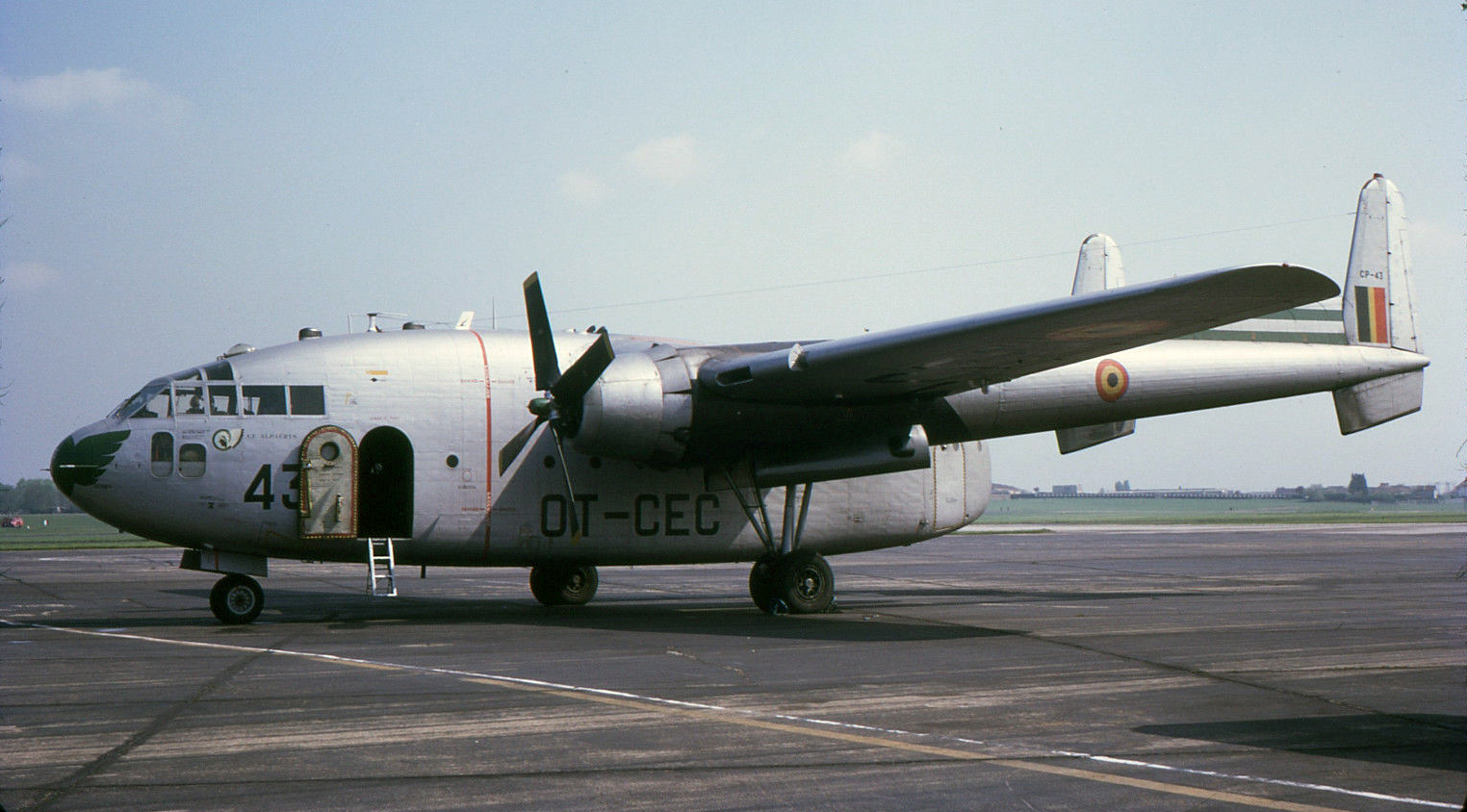
transpress nz Fairchild C119G Flying Boxcar twinengine transport
Serial Number: 22118 (RCAF) Manufacturer: Fairchild Aircraft First Flight: 17 November 1947 Retired: 1962 Specifications Crew: Pilot, co-pilot, navigator, flight engineer, loadmaster Payload: 30,000 lbs; or 62 troops; or 35 stretchers Powerplant: 2x Pratt & Whitney R-4360-20 OR 2x Wright R-3350-85 Duplex Cyclone radials Length: 86 ft 6 in

DateiFairchild C119J Flying Boxcar recovers CORONA Capsule 1960 USAF
Fairchild C-119 Flying Boxcar is a type of transport aircraft used by the American military which was developed during World War II. This was designed for carrying cargo, patients, personnel, and even mechanized equipment. This aircraft was also used to drop troops and cargo by using a parachute. Table of Contents Specifications Photo Gallery
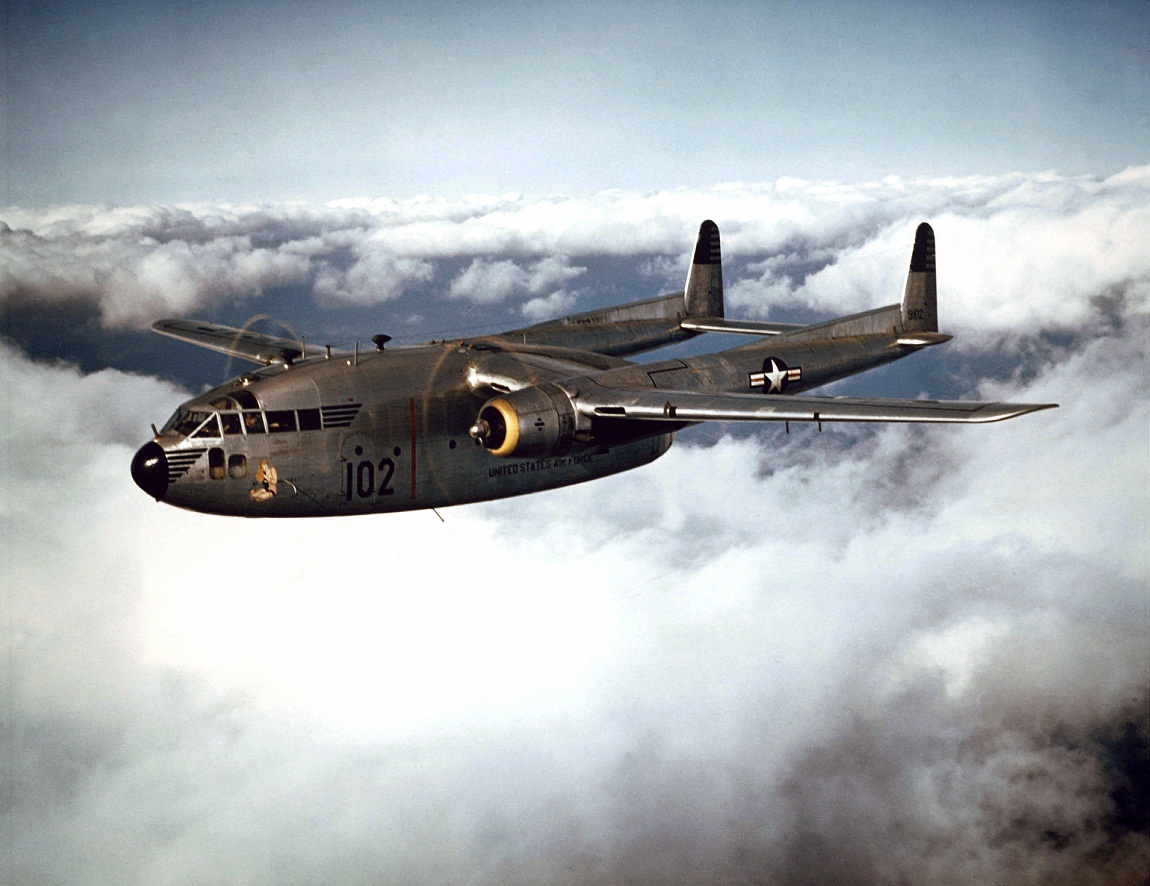
Fairchild C119 Flying Boxcar Aircrafts and Planes
Dimensions: Wingspan 109'3″, Length 86'6″, Height 26'3″. Performance: Maximum speed 296 MPH at 17,000 feet, Cruising speed 200 MPH, Service ceiling 24,000 feet. Significance of Type The C-119 design began in 1941 as the XC-82 Packet. It was first flown on 17 November 1947, at Fairchild Aviation Company's Hagerstown, Maryland plant.

Fairchild C119G Flying Boxcar aircraft picture C119 "Flying Boxcar
DAYTON, Ohio -- Fairchild C-119J Flying Boxcar in the Space Gallery at the National Museum of the United States Air Force. (U.S. Air Force photo) Fairchild C-119J Flying Boxcar

Model, Static, Fixed Wing, Fairchild C119 FlyingBoxcar National Air
Fairchild Corporation produced a winner in the post-war world with the introduction of the C-119 "Flying Boxcar". The Boxcar was derived from the C-82 "Packet" transport - looking ever more like the identical to the final C-119 production models - though the C-119 took several things further and would eventually earn its own designation, and an identifiable nickname that embodied the design.

Fairchild C119J Flying Boxcar > National Museum of the US Air Force
The C-119 Flying Boxcar was manufactured to carry cargo, military personnel, hospital litter patients and drop troops and supplies by parachute into areas where aircraft could not land. The first prototype took to the air in November 1947 and was designated C-119A. Powered by two Wright R-3350 engines, the aircraft had a flight crew of four.

Fairchild C119 Flying Boxcars in formation The United States Air
The Fairchild C119 Flying Boxcar was produced at the Fairchild aircraft plant in Hagerstown, MD. Some C119s were built by the Kaiser-Frazer Corp. in Willow Run, MI starting in 1951. The aircraft was in production from 1949-1955. 1,112 C119s were built by Fairchild, and 71 by Kaiser. 45 aircraft were built for the RCAF.
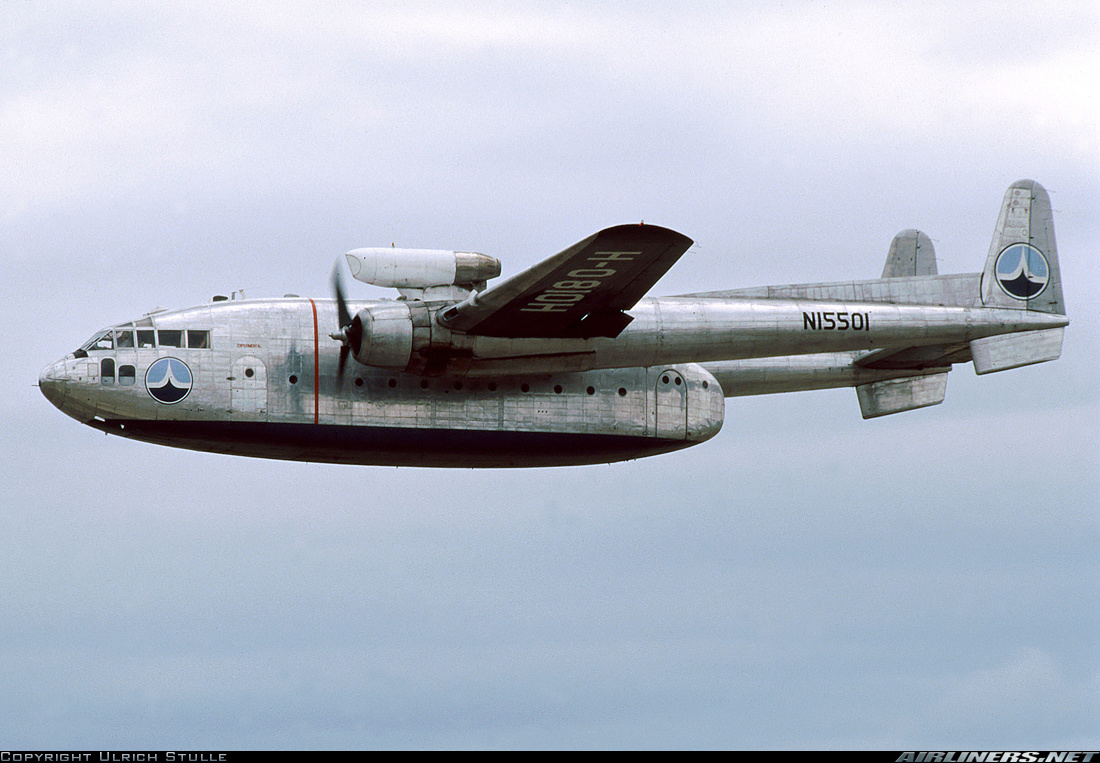
Fairchild C119G Flying Boxcar Untitled Aviation Photo 1512124
That would be the C-119 Flying Boxcar, which was developed from the Fairchild C-82 Packet, a twin-engine, twin-boom, twin-tail transport that was designed to carry cargo, personnel, litter.
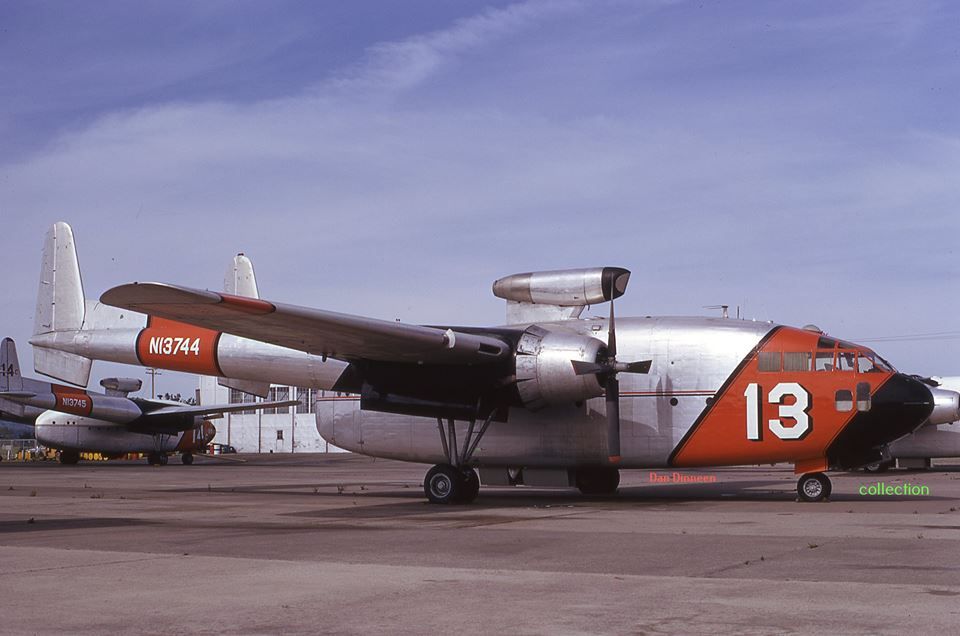
Interesting facts about Fairchild C119 Flying Boxcar
Fairchild C-119 Flying Boxcar During 1947 Fairchiid developed an improved version of the C-82, the XC-82B prototype being a conversion from a production C-82A. It differed primarily by having the flight deck resited into the nose of the aircraft and the installation of 1976kW Pratt & Whitney R-4360-4 Wasp Major 28-cylinder radial engines.

Interesting facts about Fairchild C119 Flying Boxcar
Fairchild C-119 "Jet-Pack" version, N5216R, operated by. Hawkins and Powers Aviation, Greybull, Wyoming, USA. (Photo source unknown. Please contact us if you deserve credit.) History: The C-119 was a redesign of an earlier Fairchild transport design, the C-82 Packet, which was built for the USAAF between 1945 and 1948.

fairchild c119 flying boxcar Google zoeken Avion Rc, Rc Planes, Box
The Fairchild C-119 Flying Boxcar was a military transport aircraft developed from the Second World War era Fairchild C-82 Packet. It was designed to carry cargo, personnel, litter patients, and mechanized equipment, and to drop cargo and troops by parachute. The first C-119 made its initial flight in November 1947, and by the time production.

Fairchild C119 Flying Boxcar Wikipedia AVIATION Pinterest
Walk-around and walk-through of a Fairchild C-119 'Flying Boxcar' on display at the Greybull, Wyoming airport. In the 1970s, Hawkins and Power of Greybull.
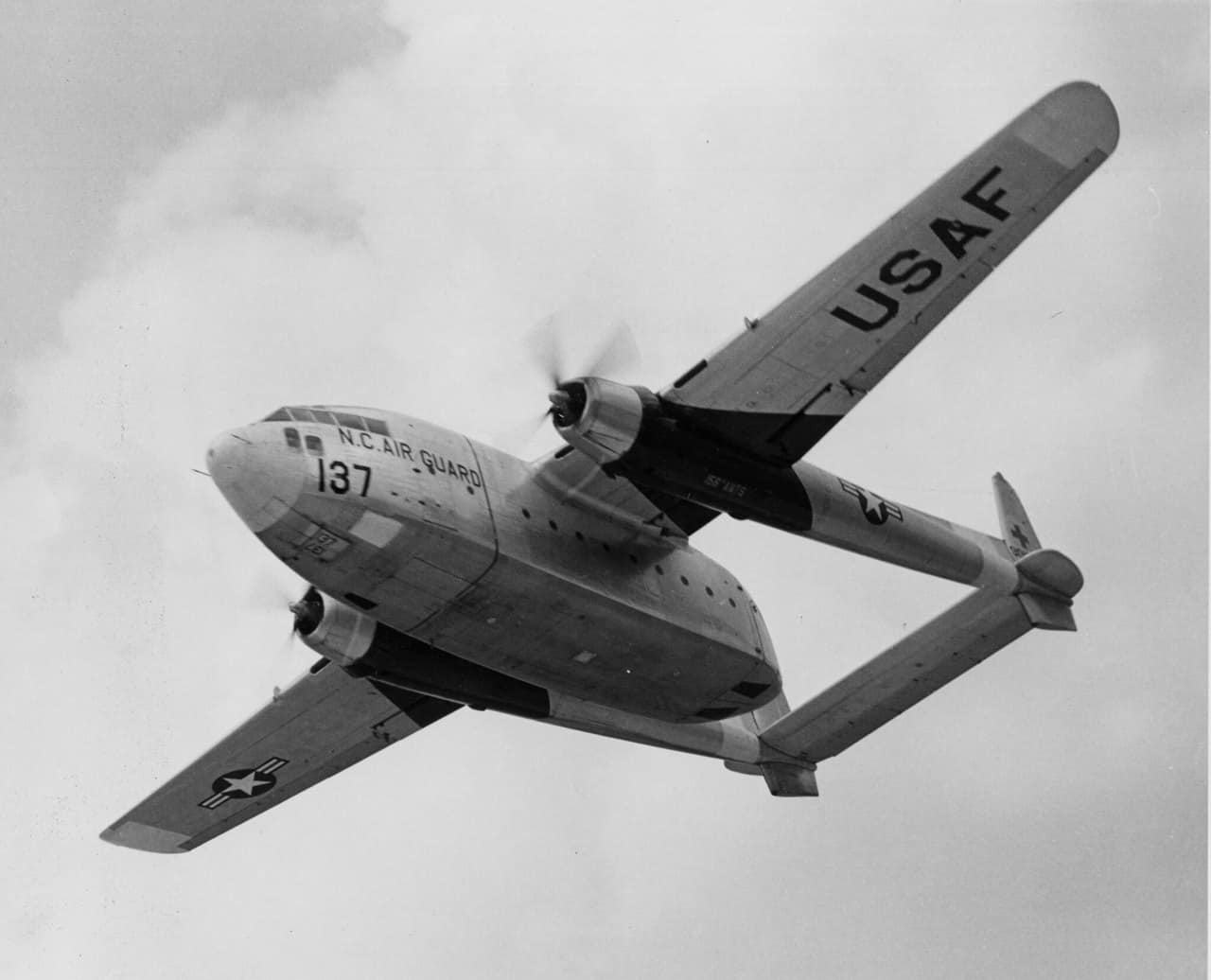
Fairchild C119 Flying Boxcar Price, Specs, Photo Gallery, History
The C-119 Packet was designed late in World War II by North American Aviation as a medium-duty transport. The end of the war brought the cancellation of the North American contract. In 1947 Fairchild-Hiller picked-up the design and began to produce the aircraft, in a slightly modified form, for the new United States Air Force.